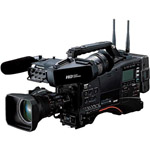Journalism and Mass Communications, College of

College of Journalism and Mass Communications: Professional Projects
Date of this Version
12-2014
Document Type
Project
Abstract
Crowd-sourcing and crowd-curating—when the public plays a role in determining content—has become an exhibition trend within American art museums. An interactive Web presence has allowed members of the public to submit amateur artworks and select from among museum collections to create exhibitions that become about popular taste. Personal interviews and documentary research revealed six major commonalities about how and why museums are choosing to relinquish traditional models of authority in exhibition creation and engage audiences in a new technological way, after surveying 10 exhibitions that have taken place since 2008. Part I of this report presents the summary findings and concludes crowd participation to play an experimental role in the future direction of museums. Part II examines the historical context for American museums’ function and purpose through the lens of exhibition evolution. Part III reports the who, what, why, and how of the individual surveyed exhibitions. American art museums are looking to crowd contributory practices as a way to remain relevant in an increasingly digital education and entertainment marketplace. However, this trend is more than likely a temporary experiment that will not radically shift the traditional curatorial process of exhibition creation.


Comments
Professional project, UNL College of Journalism and Mass Communication, 2014.
Copyright (c) 2014 Amanda Mobley Guenther